Cuba has more than 600 temples, many of them stand out for their beauty, history and architecture. Whether you are a believer or not, knowing about the various religious manifestations in Cuba is part of our culture. Today we want to share with you some of the most beautiful and important religious temples throughout the Island.
Havana Cathedral
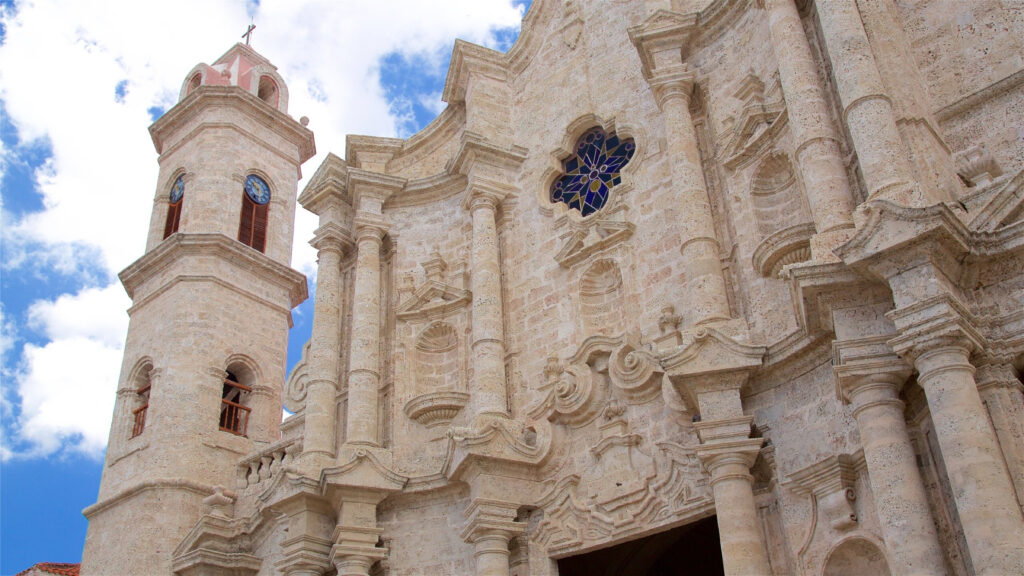
During your visit to the Cathedral, the summit of Cuban religious architecture, observe its amazing design and contemplate the frescoes created by highly prestigious artists. It was the Jesuits who began the construction of the Havana Cathedral in 1748, which was completed in 1777. The remains of Christopher Columbus were preserved in this cathedral between 1796 and 1898. Later, they would be transferred to the Cathedral of Seville.
Notice the asymmetrical bell towers that flank the façade. They were built to divert rainwater to the streets surrounding the plaza, located on an old swamp. The architects of the cathedral used coral for the construction of a large part of the building. Try to find the fossils of marine animals and plants in the stone walls.

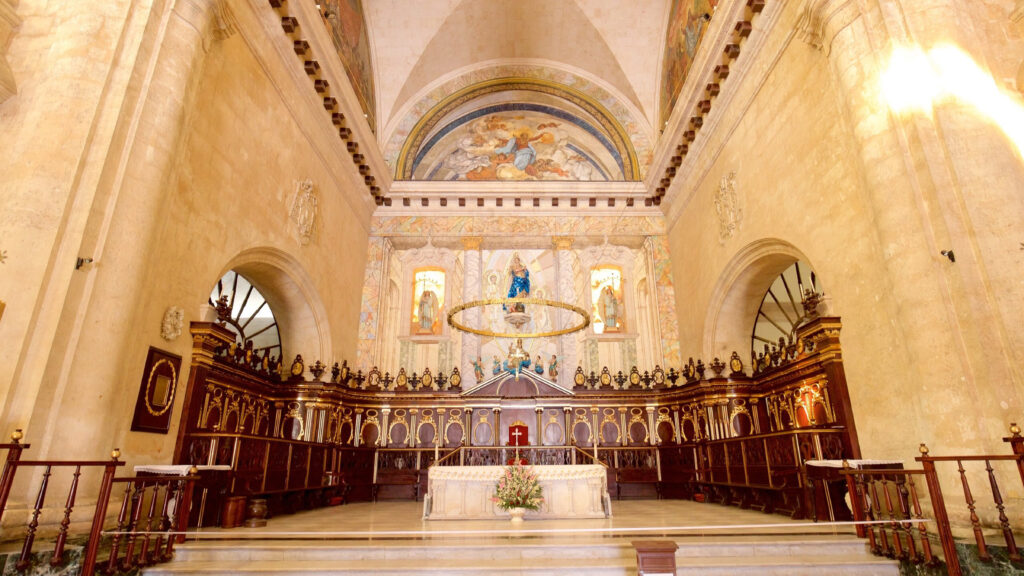
In the church you will find several rows of thick columns and a black and white marble mosaic floor. See replicas of paintings by Peter Paul Rubens and Bartolomé Esteban Murillo in the chapels. Behind the altar there are some frescoes by Giuseppe Perovanni. Observe the statue of Saint Christopher that Martín Andújar created in the 17th century. Climb to the top of one of the towers and enjoy views of the plaza and the entrance canal.
If you want to know a little more about the colonial squares of Havana, we invite you to read this article.
Church of the Holy Guardian Angel
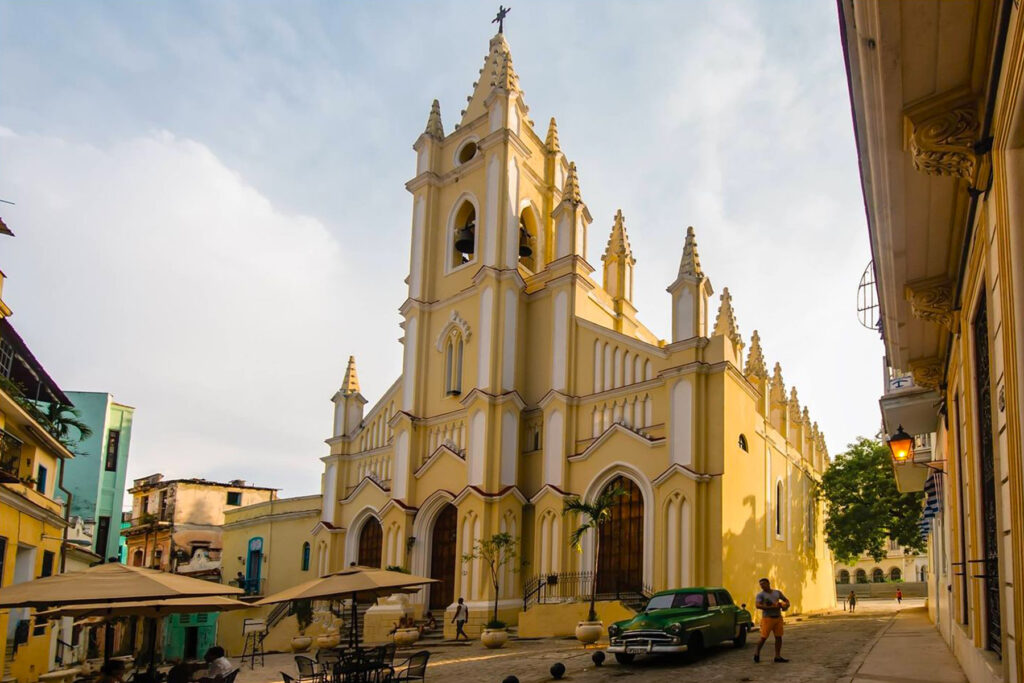
The church of Santo Ángel Custodio was built on a hill that was once called La Peña Pobre, a name preserved by one of the streets that leads to it and later by Loma del Ángel, whose perspective gives it a peculiar charm. This church appears in countless historical events and stories. Jose Marti was baptized there in 1853 and Felix Varela in 1788. In addition, it was the setting where the writer Cirilo Villaverde set the main scene of his novel Cecilia Valdes.
Parish of the Sacred Heart of Jesus and Saint Ignatius of Loyola
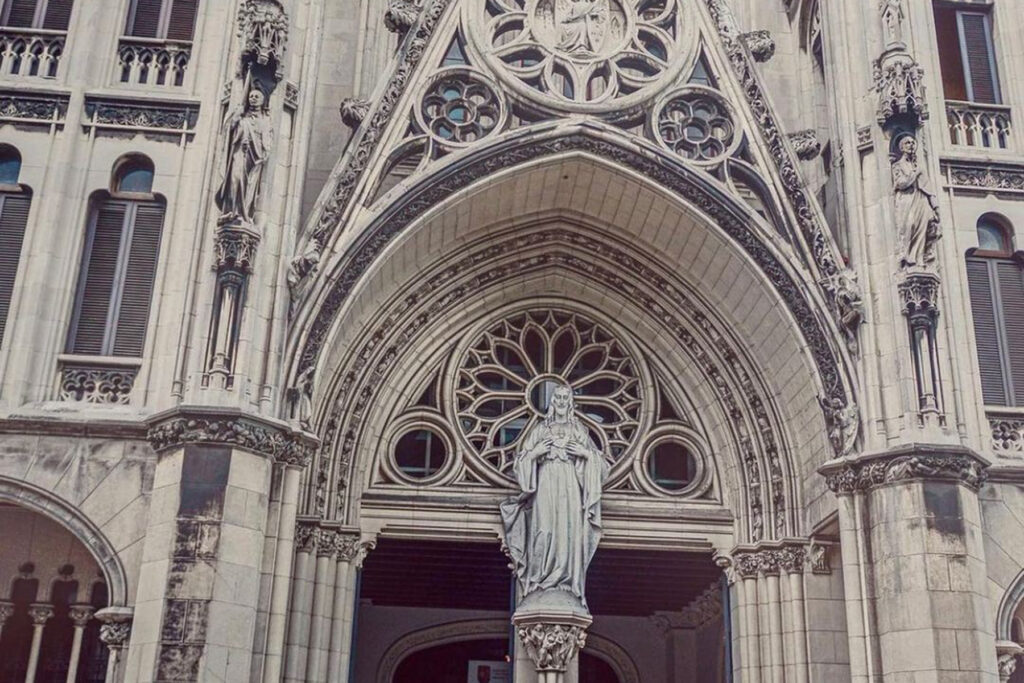
The people of Havana call it the Iglesia de Reina, because it is located on the Calzada de Reina. The Jesuit brother Vicente Leza was the promoter of its construction in 1907, which began to materialize in 1914, with the laying of the first stone. It was paid for by wealthy devotees, such as the banker Narciso Gelats, the Valle Iznaga family and Mrs. Francisca Grau del Valle, in gratitude for a grace received. Its inauguration and blessing took place on May 3, 1923, by Monsignor Pedro González Estrada, Bishop of Havana.
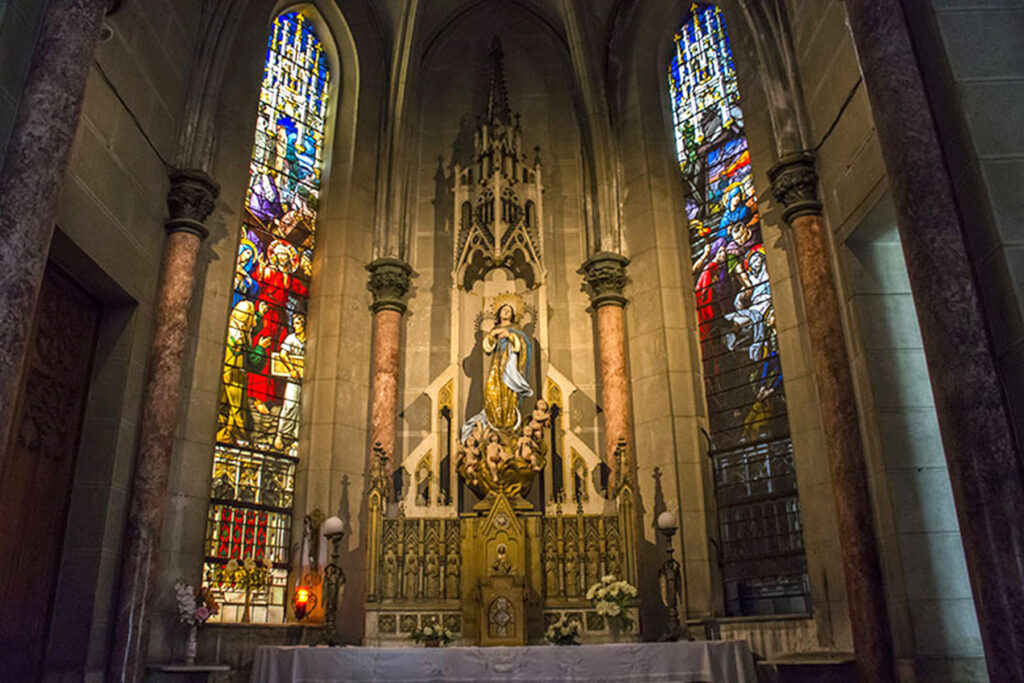
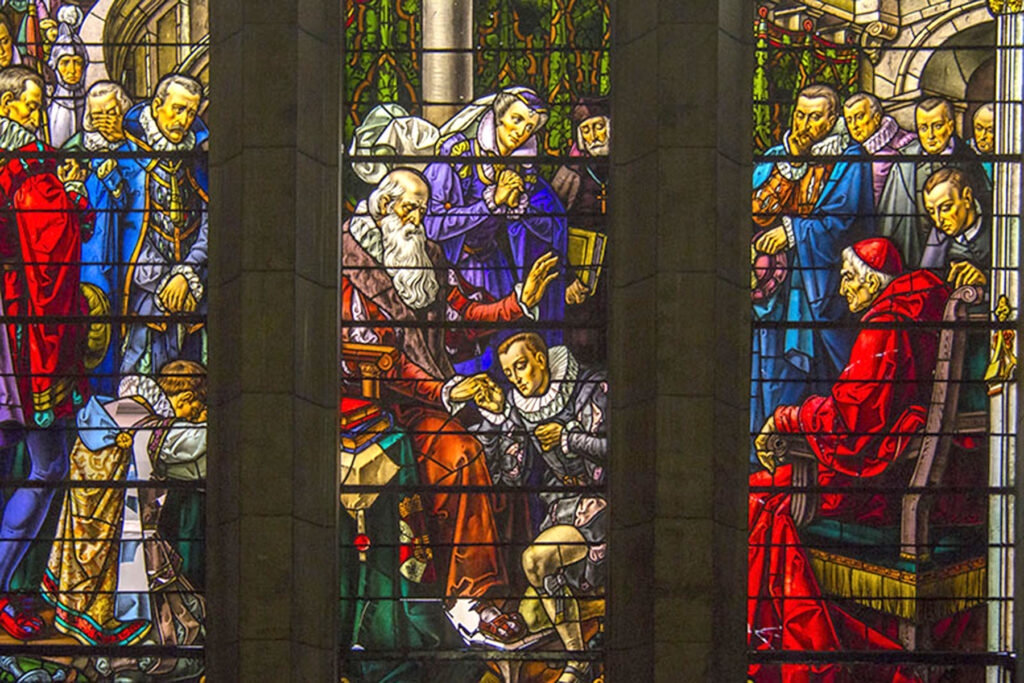
Its interior is lavish, with beautiful stained glass windows through which light filters, building an environment of nuanced colors that break the darkness and overwhelm the faithful. The stained glass windows, exquisitely manufactured in Spain, represent Marian images on the right nave and on the left, historical passages of the Society of Jesus, such as the arrival of the Jesuits to Japan. Between stained glass windows and polychrome skylights, there are almost a hundred of these artistic jewels extending from the walls of the naves, the transept and the main altar.
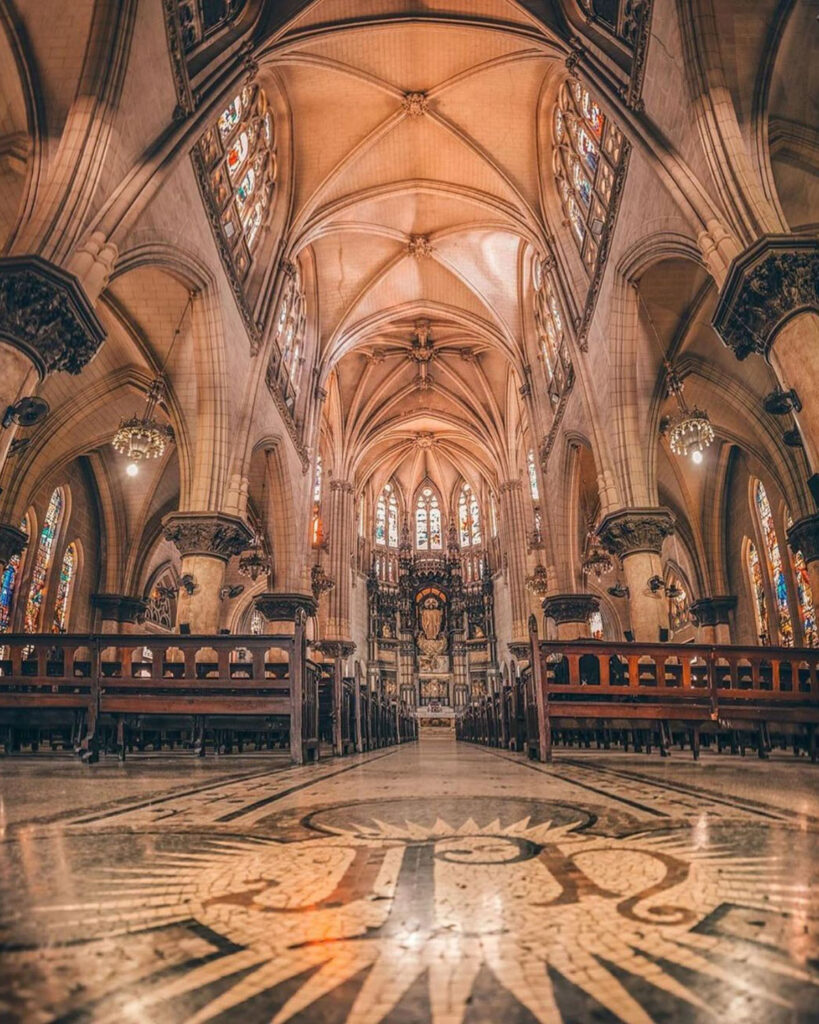
The image of Christ, upright, with his arms open in a protective gesture, stars on the main altar, adorned with various carvings of allegorical figures of Gothic and Christian symbology. On the mezzanine, above the entrance, you can see a grandiose organ with more than a hundred flutes, built in Europe. On the altar of the right nave there is a beautiful image of the Virgin of Charity, Patroness of Cuba, covered with a golden mantle.
The facade of the church concentrates the greatest decorative and symbolic charge. There are 32 gargoyles, typical Gothic imagery, that climb to the top of the bell tower, 77 meters high, topped by a bronze cross. The spire-shaped bell tower stands out as one of the tallest buildings in the city. The image of the Sacred Heart of Jesus, carved in white marble, welcomes pilgrims on a pillar, at the top of the monumental entrance to the temple.
La Iglesia del Cobre
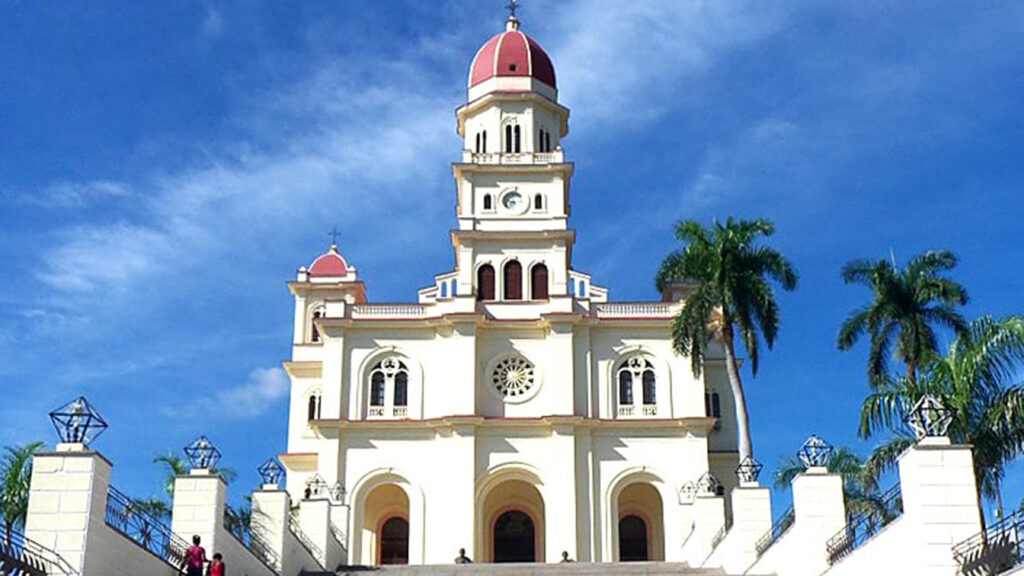
It is located at the top of the hill called Maboa, near the town of El Cobre, which owes its name to a nearby open-pit mine of this mineral. The current building, built in 1927, consists of three naves topped by towers with bell towers and its central structure has a dome. The Sanctuary of Our Lady of Charity of Cobre is accessed by a long, wide staircase.
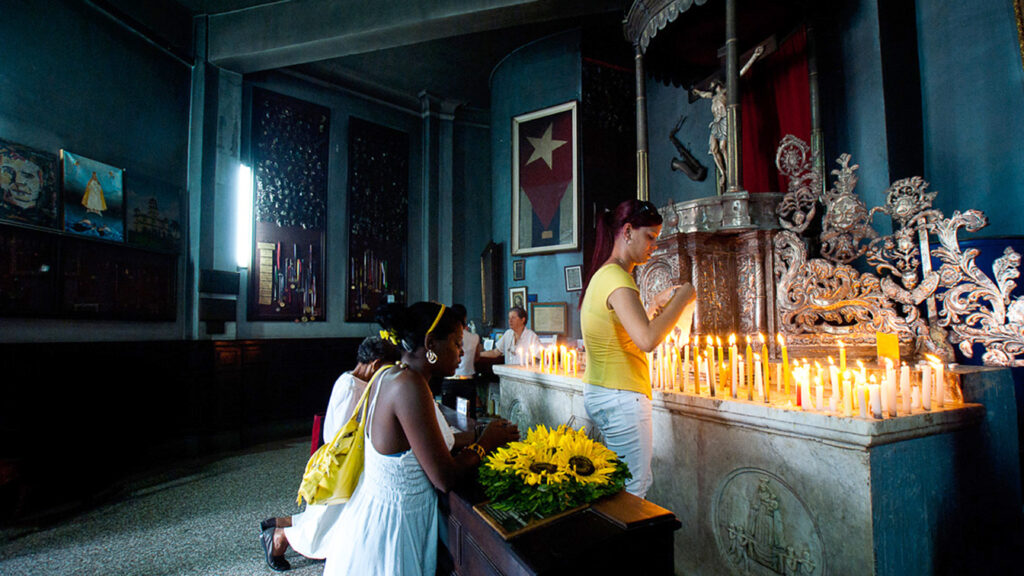
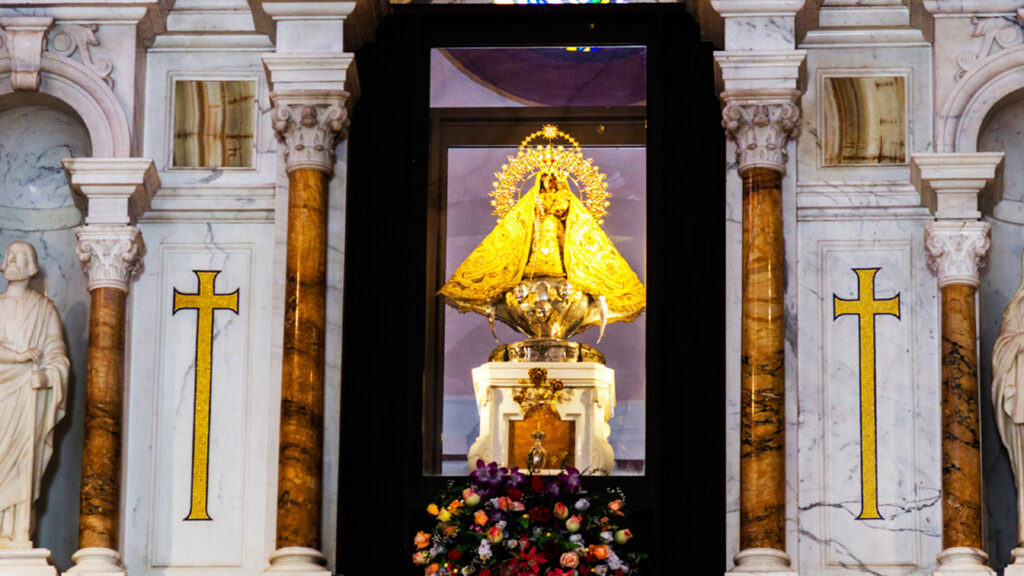
Inside the temple is the image of the Virgin of Charity, which is made of gold and is located on an altar of marble and solid silver, decorated with objects of great value. Below the Camarín de la Virgen is the so-called Chapel of Miracles, which is where the faithful, believers and pilgrims deposit objects that they offer to the Virgin. There you can see objects of all kinds, some of great value, from a Nobel Prize to military trophies, Olympic medals, jewelry, precious stones, clothing and other offerings left by people who in this way thank the Virgin for her favors.
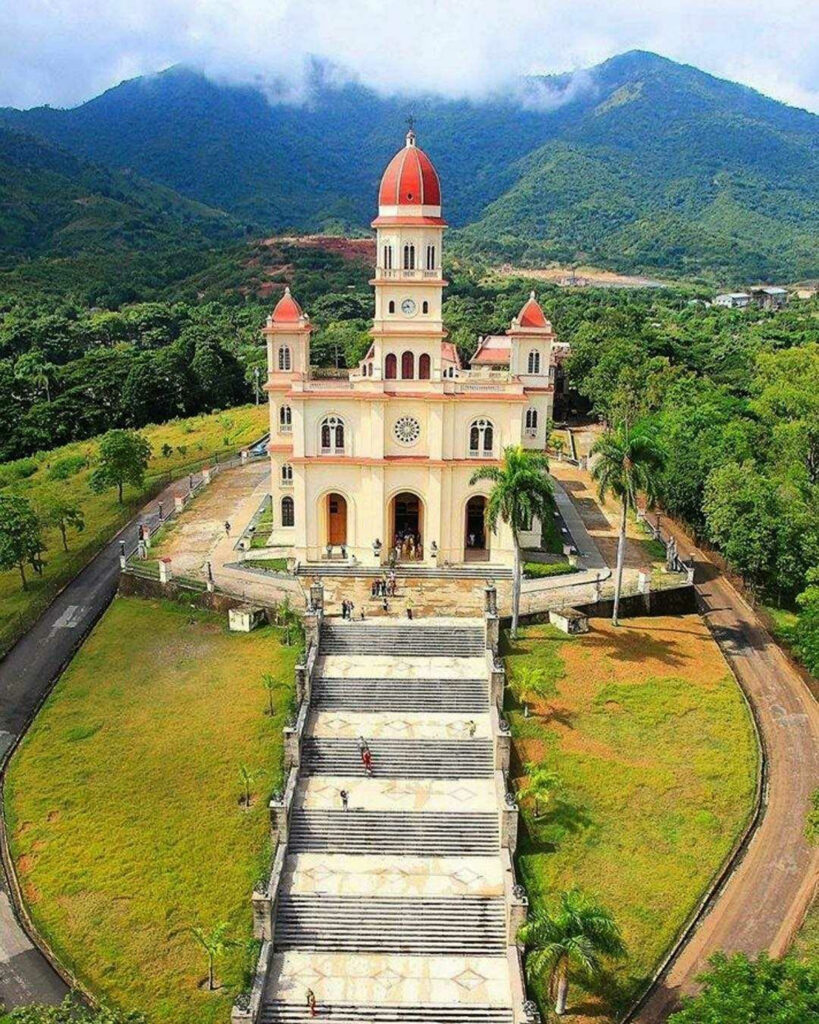
It is said that the Copper Sanctuary is visited daily by around 500 people, but this number increases in the days around the celebration of the Virgin, which is September 8.
Cathedral Basilica of Our Lady of the Assumption
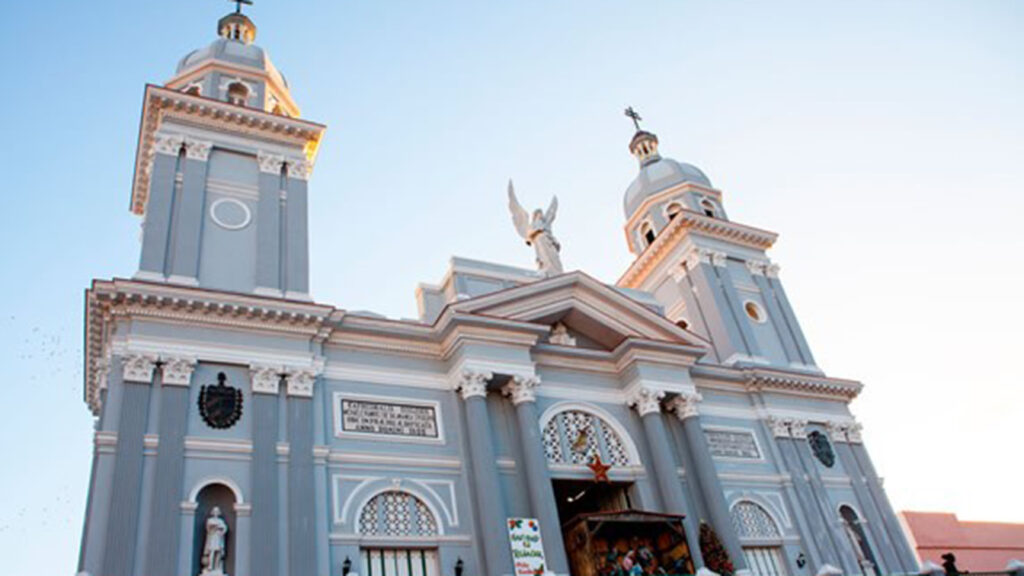
It is the main and largest Catholic temple in Cuba with the category of basilica and primate cathedral. It is located in Parque Céspedes, on Santo Tomás Street between San Basilio and Heredia and is considered a jewel and paradigm of the city's architecture. It is currently the headquarters of the Archdiocese of Santiago de Cuba.
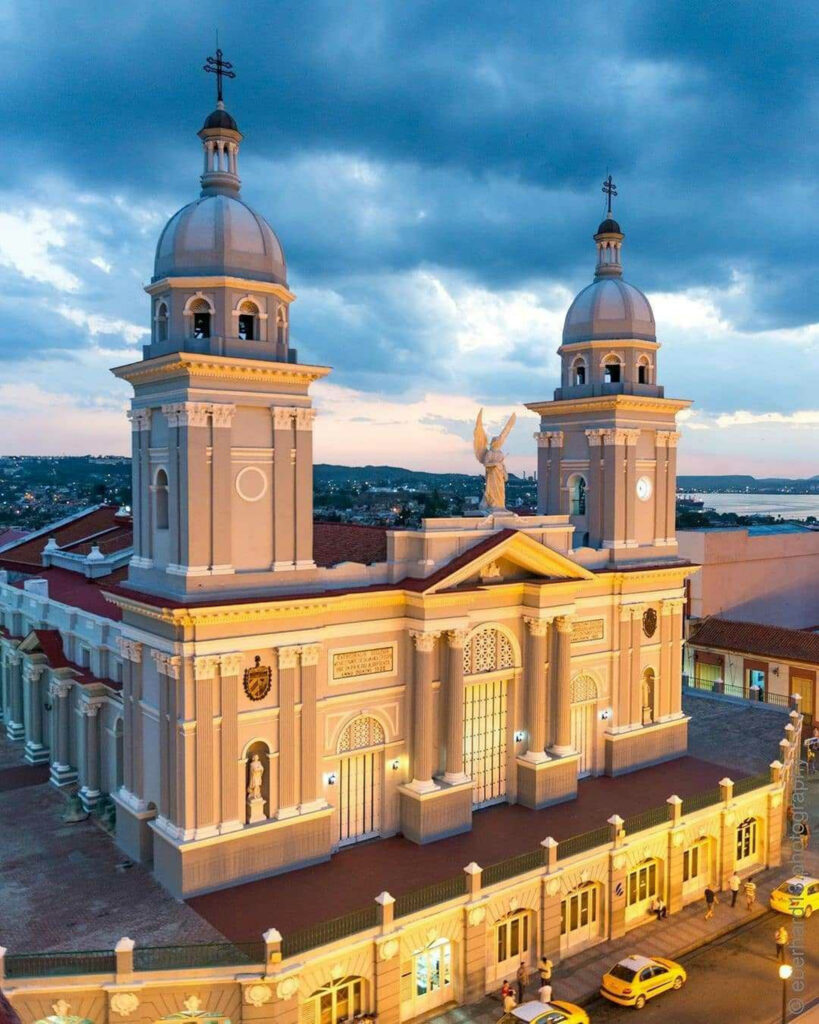
Over the years it suffered attacks from privateers and pirates and damage from four earthquakes. The one that exists today was built in 1818. Inside we can see works of art such as a painting of Christ painted by Francisco Antonio that was brought from Cartagena de Indias and is known as El Santo Ecce Homo, the oldest religious work in Cuba . There is also the Wind Organ with more than a century of existence, the Nave of the Blessed Sacrament, a sculpture of Saint John the Evangelist, 15 paintings of pictorial works of the crucifixion of Christ, the sculpture of Saint Peter the Apostle and, in the chapel, the figure of the Virgin of Sorrows and Jesus Christ, among others.
Cathedral of Saint Clare of Assisi
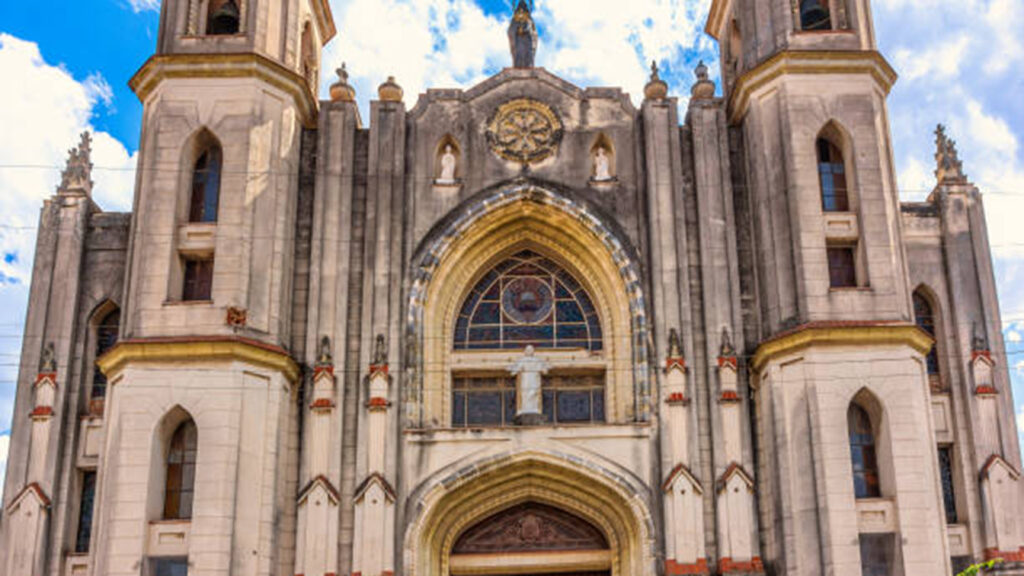
Located on the corner of Marta Abreu Street and Callejón Lubián. The construction work began in 1940 and was completed in 1953. Its style is eclectic, late for the time when the island was experiencing the height of the Modern movement in arts and architecture.
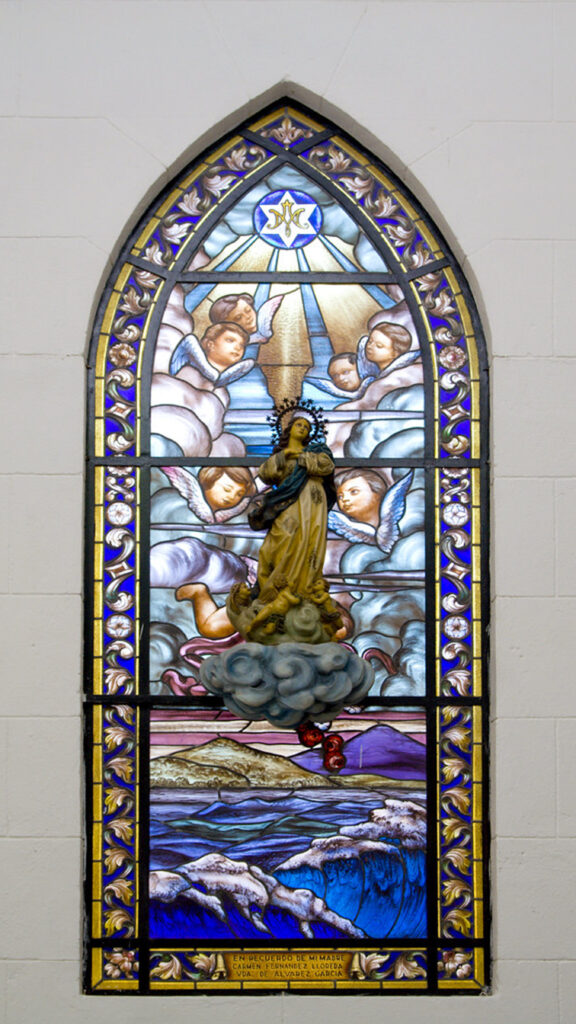
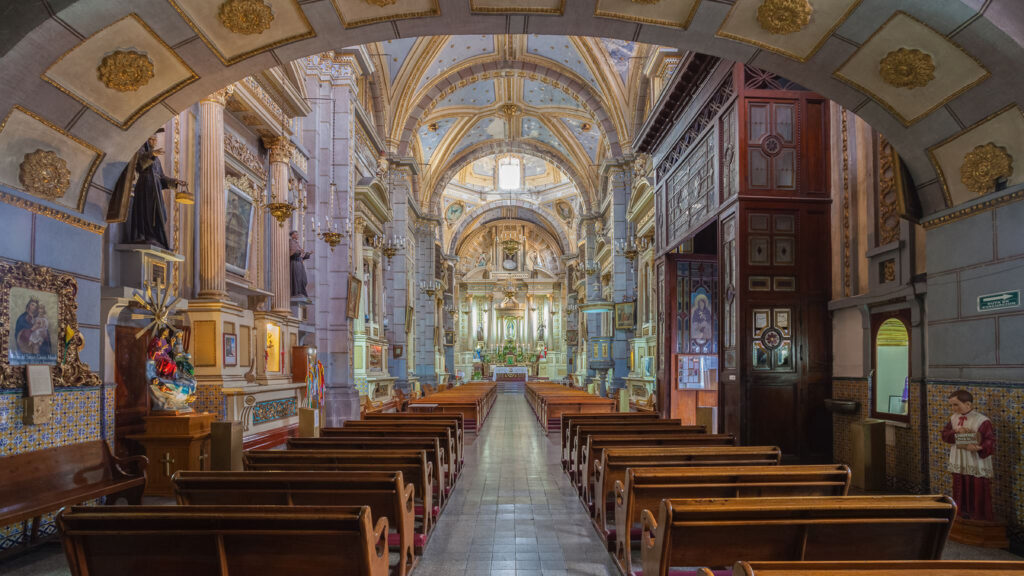
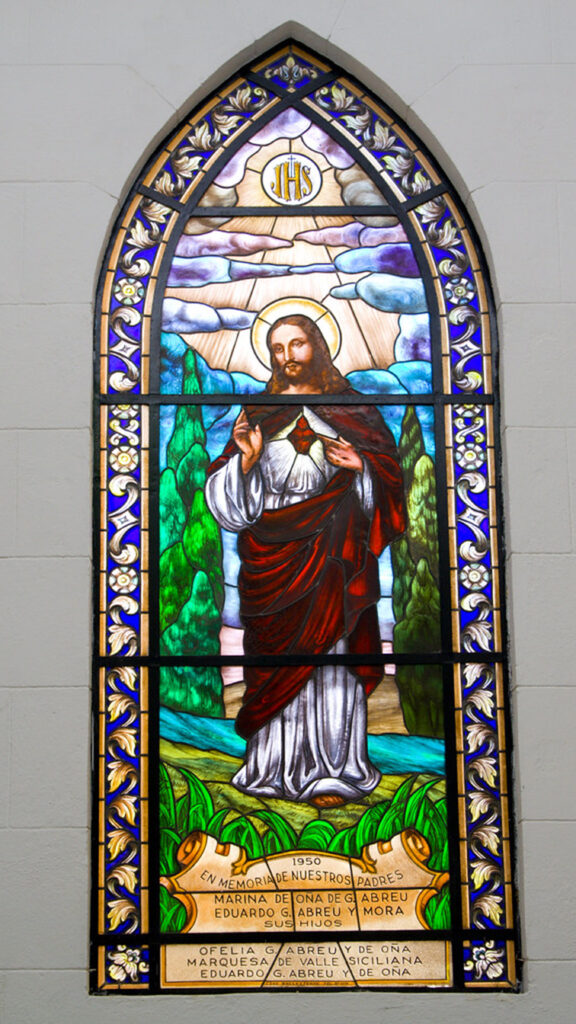
The temple is valued for being a landmark in the city's profile, distinguished by its excellent workmanship and the use of stained glass, the main sources of light in the building, some showing scenes from the New Testament. She identifies herself as the greatest exponent of the style, cataloging herself as the queen of Santa Clara eclecticism. She is popularly known as the Notre Dame of Cuba for her unmatched beauty.
San Juan Bautista de Remedios Church
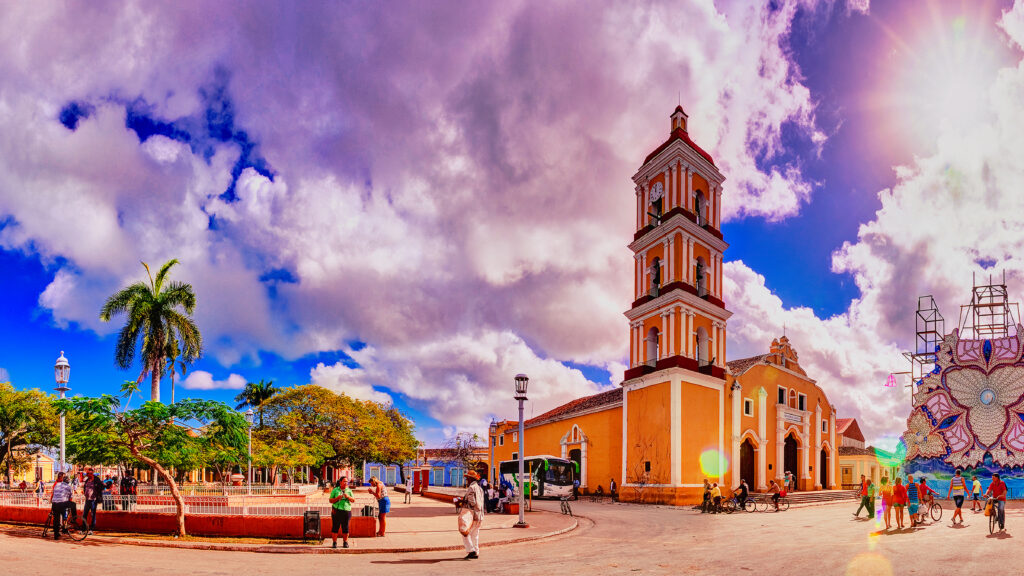
It is credited with being the oldest church in Cuba. The current church was built in 1692 on the existing structure of a church that was originally built in 1570. The bell tower is a neoclassical design and the interior is baroque.
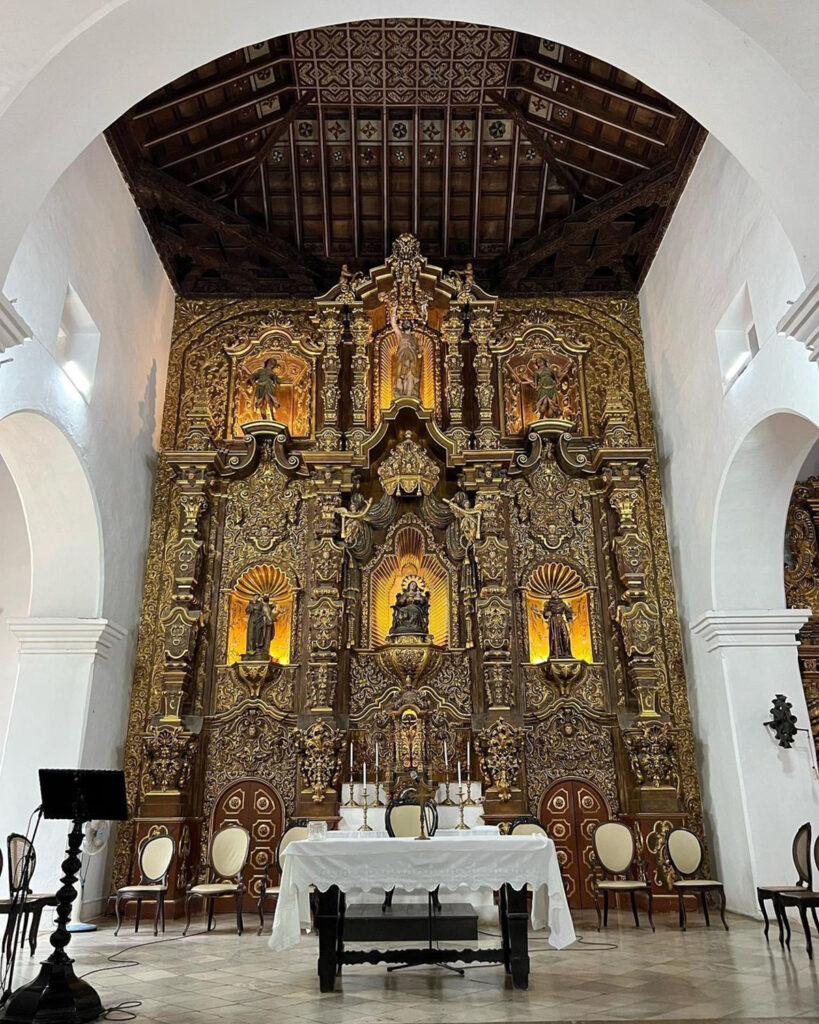
Some of the most important features are the ornate ceiling and covered cedar altar all carved in wood and laminated in gold. This work was carried out by a Remedian artisan of Asian descent Rogelio Attá.
Church of the Holy Trinity
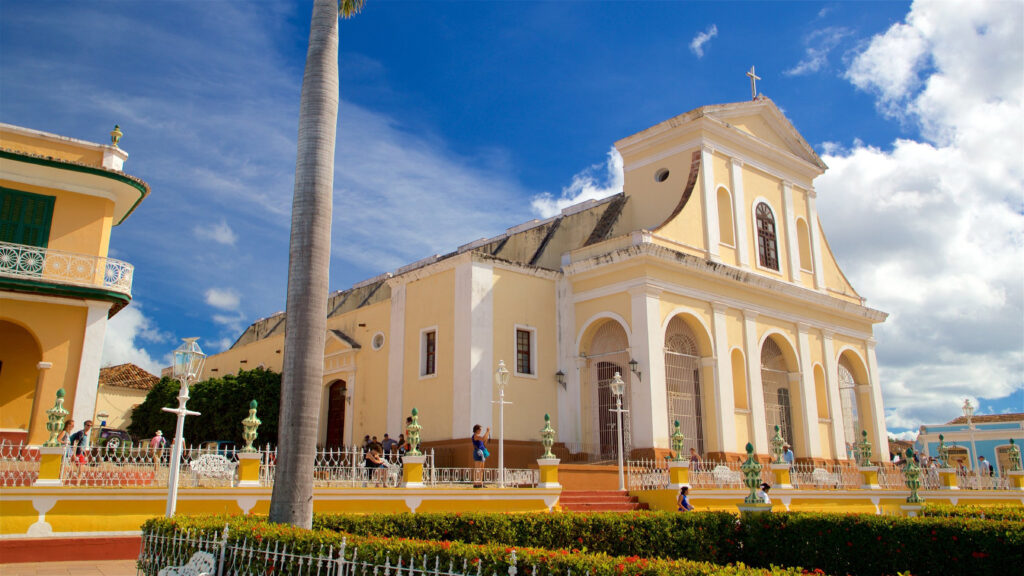
It rises above the northeast side of the Plaza Mayor, which is in the historic center of Trinidad. It is one of the largest temples in the country, it has five naves and has great prestige for its wealth and interior art. Its structure has a combination of Greek, neoclassical and Spanish colonial styles. The two-level main façade is one of the most impressive elements of this church. The lower level has a series of arched doorways, which are framed by decorative pilasters.
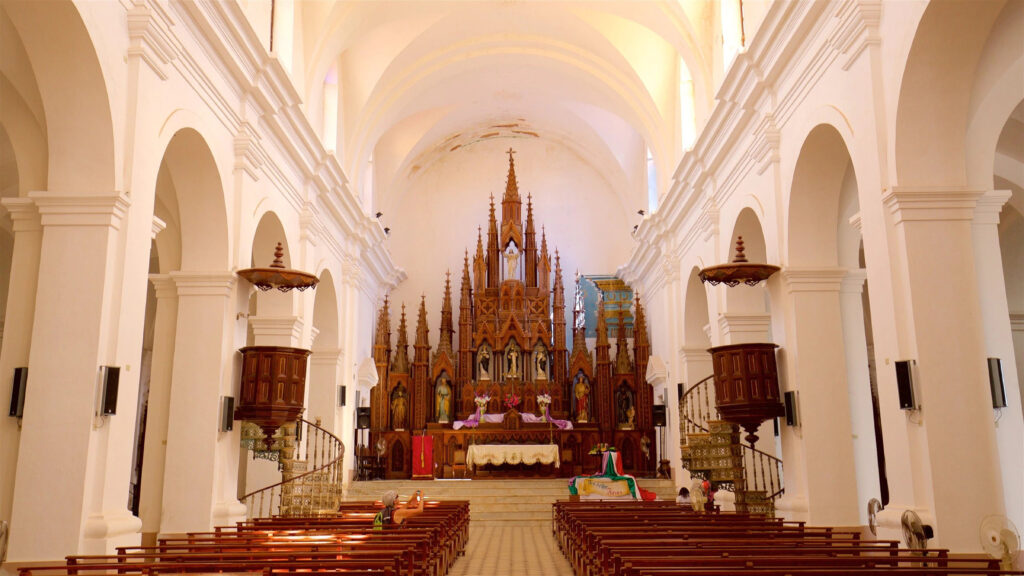
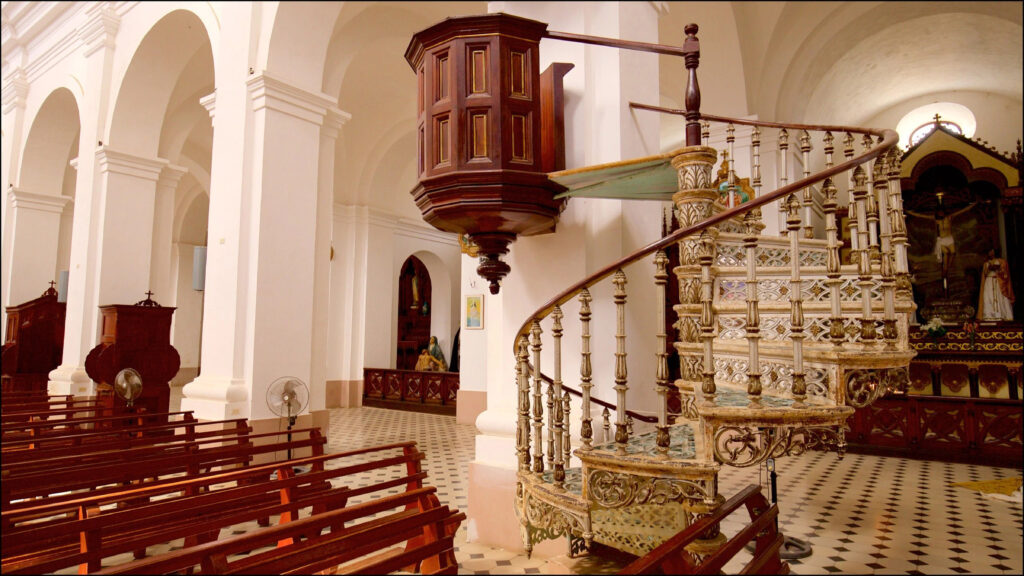
The main artistic elements of the church interior are the beautifully decorated altars. Dominican monks hand-carved these elements from fine Cuban wood. The most prominent element is the Gothic style altar, built in honor of Our Lady of Mercy. Observe the enormous whitewashed arches and marble benches of the central nave.
On this spiritual journey through Cuba, you will discover how religion and spirituality are intertwined in the daily lives of Cubans, creating a unique experience full of faith and tradition.
In addition, we invite you to learn about all the types of tourism that you can practice in Cuba..
If during your trip to Cuba you want to stay in private houses to help the locals, we have a lot of cool hostels for you, take a look at this link:
Find us in

